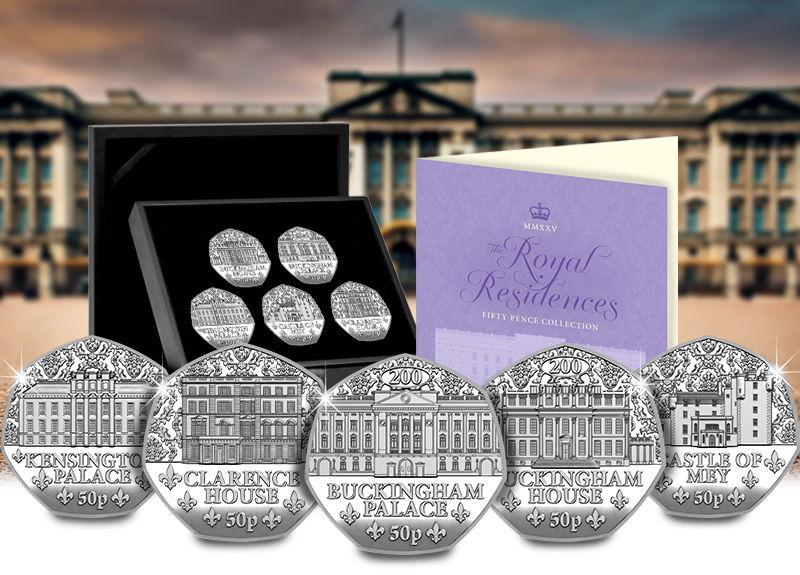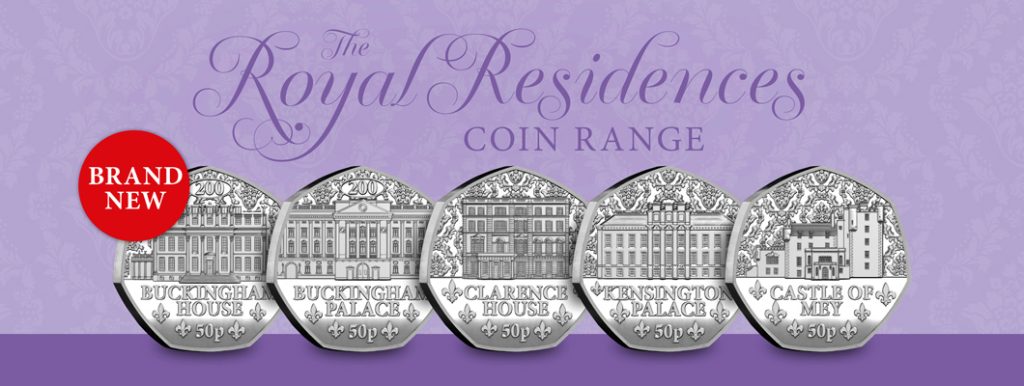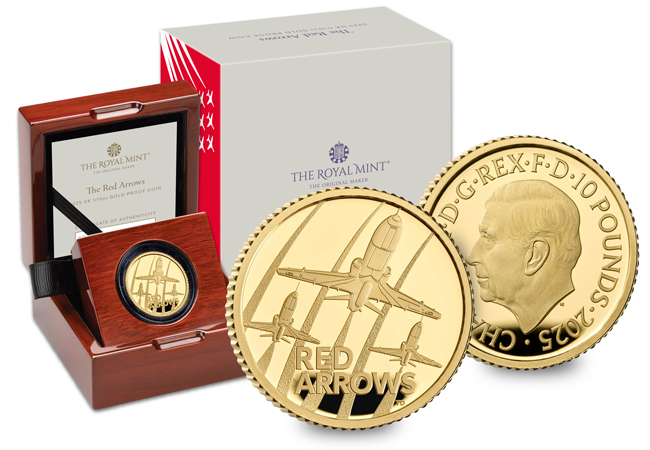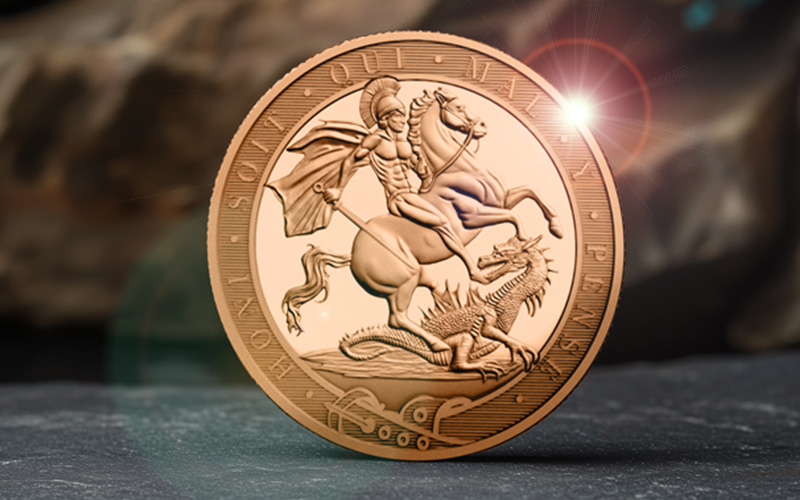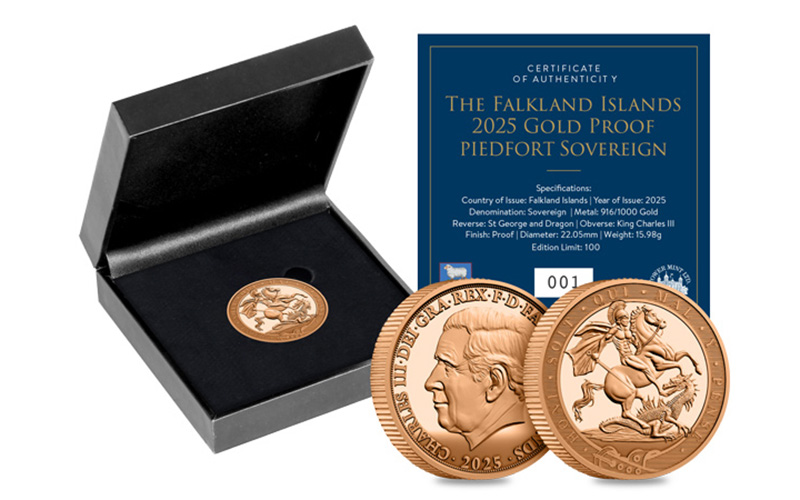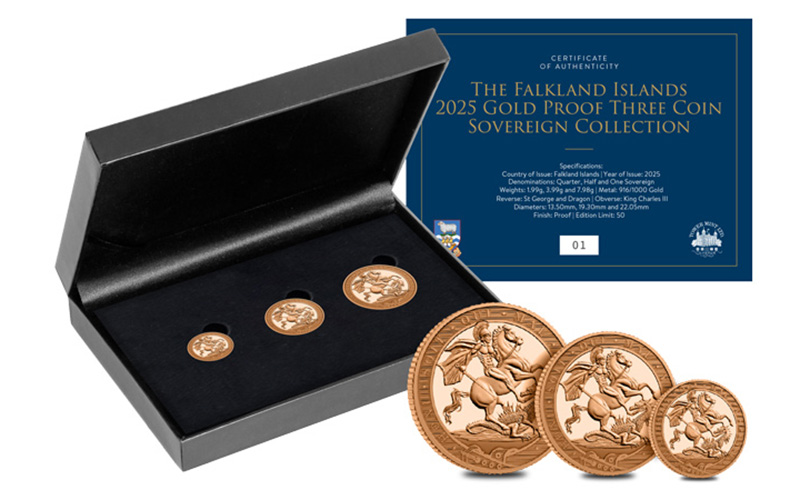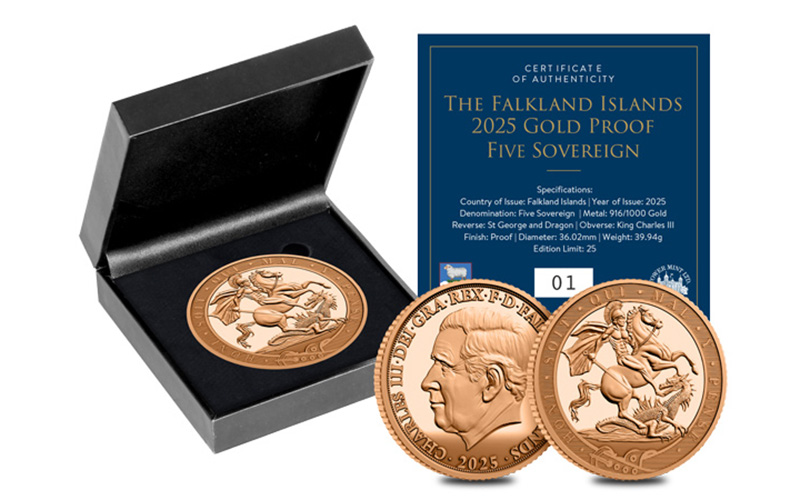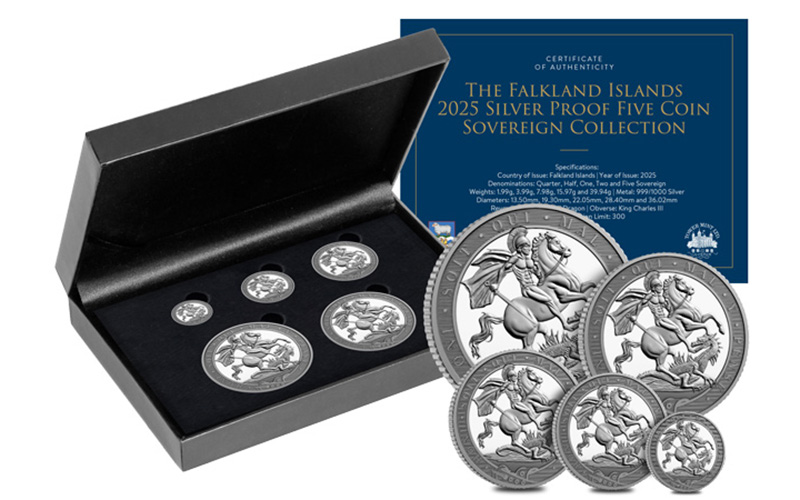British History
Introducing the 2025 Royal Residences 50p Collection
Following in the footsteps of the sell-out Platinum Jubilee and Coronation 50p collections, a brand-new release is set to captivate collectors and Royal enthusiasts alike. The latest instalment in the sought-after Royalty 50p programme shines a spotlight on five historic Royal Residences—places that have witnessed some of the most defining moments in British history.
Honouring 200 Years of Buckingham Palace
This exciting new collection comes at a particularly special time, marking 200 years since the transformation of Buckingham House into the world-famous Buckingham Palace we know today. To commemorate this milestone, the 2025 Royal Residences 50p Collection has been officially authorised for release by King Charles III and Palace Authorities.
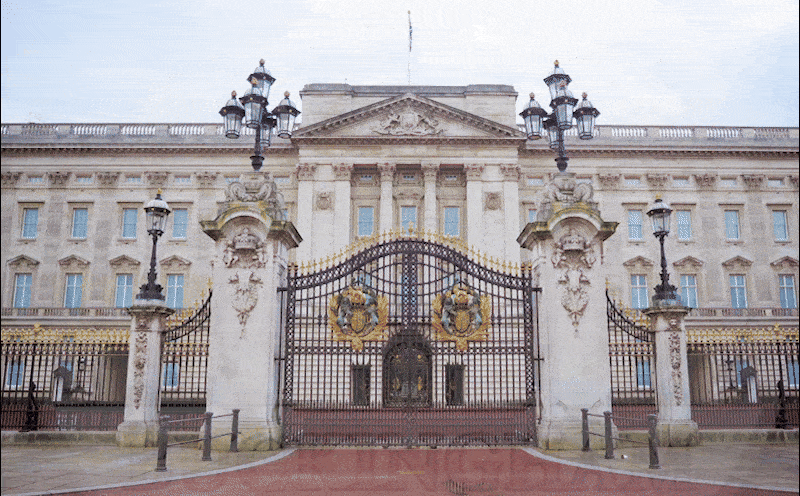
Steeped in tradition and grandeur, the Royal Residences have been the backdrop for everything from royal births and weddings to state occasions and coronations. Each residence carries with it a rich history, offering a glimpse into the personal and public lives of the Royal Family.
The Five Iconic 50p Coins featuring Royal Residences
This highly anticipated collection celebrates five historic Royal Residences, each with a unique connection to the British Monarchy:
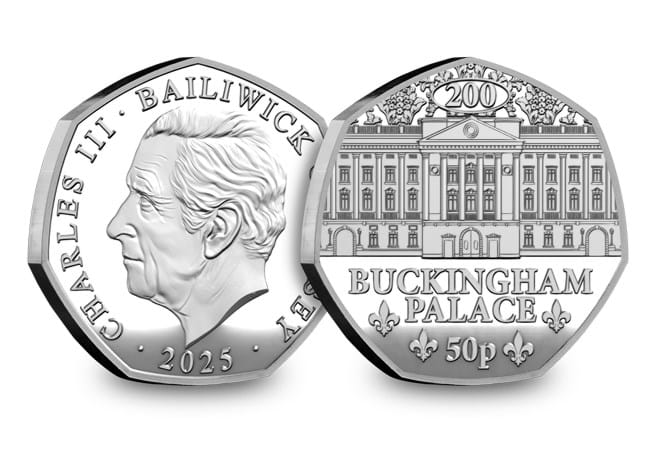
Buckingham Palace
Attracts over 500,000 visitors each year.
The official London residence of King Charles III and the administrative headquarters of the Monarchy.
Buckingham House
This one-time modest house evolved into one of the most iconic palaces in the world.
The original building that lay at the heart of Buckingham Palace before its grand transformation in 1825.
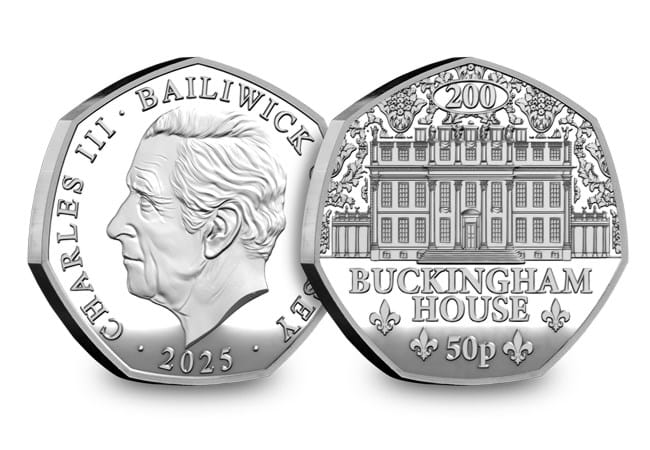
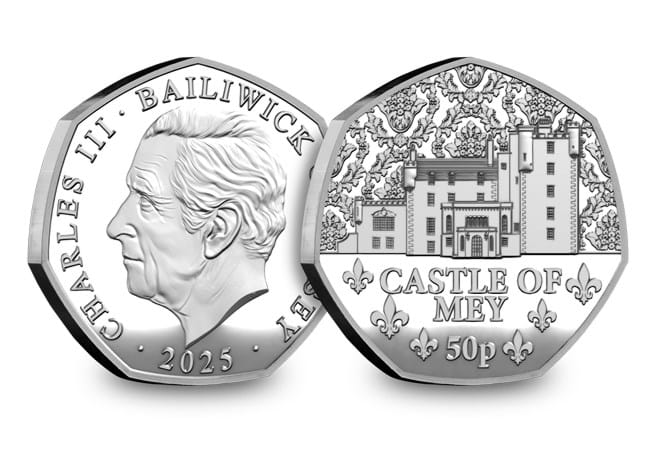
Castle of Mey
Now visited annually by King Charles III and Queen Camilla each July.
Restored by The Queen Mother in the 1950s, this Scottish castle remains a cherished Royal retreat.
Clarence House
Previously home to The Queen Mother for nearly 50 years.
The London residence of King Charles III and Queen Camilla since 2003.
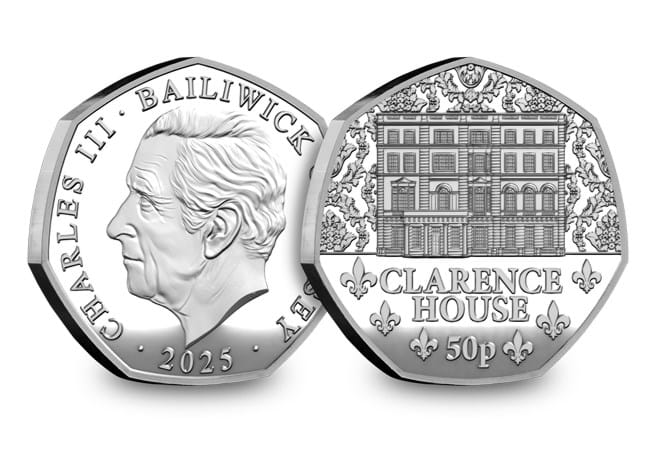
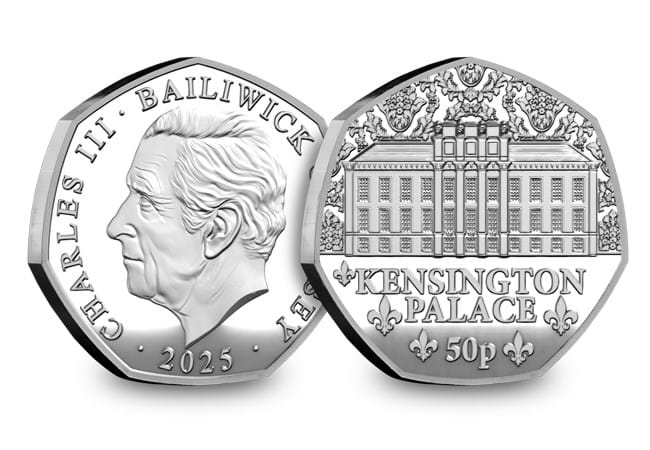
Kensington Palace
Today, it remains the London residence of the Prince and Princess of Wales.
A historic residence that has been home to generations of the Royal Family.
Exclusive One-Year-Only Privy Mark

Collectors will be particularly excited about the exclusive design details incorporated into this collection. The Buckingham Palace and Buckingham House 50p coins will feature a one-year-only “200” Privy Mark, making them truly unique additions to any collection.
Secure Your Royal Residences 50p collection
The 2025 Royal Residences 50p Collection is available in a variety of specifications to suit every collector. Given the popularity of previous Royal 50p collections, demand for these coins is expected to be exceptionally high.
Click below to explore the full range and secure your piece of Royal history today!
Red Arrows 50p Coin Collection: A Tribute to Britain’s Iconic Aerobatic Team
A new UK 50p has just been released celebrating the legacy and precision of the iconic Red Arrows. Originally featured in this year’s annual coin set, the Red Arrows 50p has now been released individually, with some incredibly limited specifications making their debut in today’s launch.
A Legendary Team Honoured on UK Coinage
Since their inception in 1964, the Royal Air Force Aerobatic Team—better known as the Red Arrows—have performed nearly 5,000 dazzling displays across 57 countries. Renowned for their precision flying and breathtaking aerobatic formations, the Reds represent the pinnacle of aviation skill. But behind their airborne brilliance stands a team just as crucial—their dedicated ground crew, known as The Blues, who ensure every performance runs seamlessly.
The Red Arrows Silver Proof 50p
At the heart of this new collection is the Red Arrows Silver Proof 50p, which features an iconic depiction of the Red Arrows’ Hawk T1 aircraft flying overhead in their signature formation, leaving behind their famous red, white, and blue smoke trails. This stunning coin, available in silver proof and piedfort editions, comes alive with exquisite colour printing that enhances the striking design.
For collectors looking for something even more exclusive, the Red Arrows Silver UK Coin Cover is a must-have. Limited to just 150 covers worldwide, this extraordinary piece pairs the stunning silver proof 50p with four Red Arrows first-class stamps, alongside a technical drawing of the legendary Diamond 9 Formation—a true celebration of the team’s history and expertise.
An Exclusive Gold Coin Release
For those who favour ultra-limited editions, here is something truly special—a tenth of an ounce gold coin, available exclusively through The Westminster Collection. With only 500 pieces released worldwide, this coveted release is set to be a standout in any collection. The Red Arrows have a dedicated fan base, and with coin collectors also vying for these rare pieces, demand is expected to be exceptionally high.
Secure Your Piece of Aviation History
With such limited numbers available, these coins are destined to sell quickly. Whether you’re an aviation enthusiast, a long-time Red Arrows fan, or a passionate coin collector, this collection is a remarkable tribute to one of Britain’s most celebrated aerobatic teams.
Announcing the First-Ever Falkland Islands Sovereign Collection!
For the first time in history, the Falkland Islands has released its own official Sovereign, marking a major milestone in numismatics. This stunning new issue features the iconic St. George and the Dragon design on the reverse and the official portrait of King Charles III on the obverse. However, what truly sets this release apart is its exceptional rarity and variety of specifications available to collectors.

Available in Exclusive Specifications
The Gold Proof Sovereign – Limited to Just 250 Worldwide
This Gold Proof Sovereign is strictly limited to only 250 coins worldwide, making it 20 times rarer than the sold-out UK 2025 Sovereign. Struck to the same exacting standards as The Royal Mint’s Sovereign, it contains 7.98g of 22-carat gold and boasts a flawless proof finish.

The First-Ever Gold Proof Piedfort Sovereign – Only 100 Available
For those seeking an even rarer collector’s item, the Falkland Islands Gold Proof Piedfort Sovereign is the first of its kind. With just 100 coins available, it is 12 times more limited than the UK 2025 Piedfort Sovereign. Struck with 15.96g of 22-carat gold, it represents an unparalleled collecting opportunity.

The First-Ever Gold Proof Sovereign 3-Coin Set – Only 50 Available
This exclusive 3-coin set includes the Sovereign, Half Sovereign, and Quarter Sovereign, all struck to the highest proof standard. With just 50 sets issued worldwide, it is 13 times more limited than the UK 2025 Piedfort Sovereign.

The First-Ever Falkland Islands Gold Proof Five-Sovereign Piece – Only 25 Available
A true centrepiece of the collection, this impressive Five-Sovereign Piece is one of the rarest Falkland Islands releases, with only 25 coins issued. This makes it 14 times more limited than the sold-out UK 2025 Five-Sovereign Piece.

Introducing the First-Ever Falkland Islands Silver Proof Sovereign
The Silver Proof Sovereign – Limited to Just 1,000 Worldwide
Adding to the historic nature of this collection, the Falkland Islands has also issued its first-ever Silver Proof Sovereign. Featuring the same stunning St. George and the Dragon design, only 1,000 of these coins have been minted. This makes it 50 times rarer than the UK 2025 Silver Sovereign, of which 50,000 were struck. Each coin is struck in 7.98g of sterling silver to the highest proof standard.

The First-Ever Silver Proof Five-Sovereign Set – Only 300 Available
This prestigious five-coin set includes the Silver Proof Sovereign, Half Sovereign, Quarter Sovereign, Double Sovereign, and Five-Sovereign Piece. With only 300 sets available, it is one of the most limited offerings in this groundbreaking collection.

Why This Release is a Must-Have for Collectors
- A Historic First: This is the inaugural Sovereign release from the Falkland Islands, making it a key numismatic milestone.
- Extremely Limited Editions: With incredibly low mintage numbers, these coins are significantly rarer than their UK counterparts.
- Unparalleled Quality: Each coin is struck to a flawless proof standard, requiring meticulous craftsmanship and precision.
- Deep British Heritage: The Falkland Islands’ long-standing ties with Britain add historical and cultural significance to this release.
With edition limits this low, these coins will not be available for long. Secure your piece of history today!

